Last Chance to Catch NYC's Holiday Notalgia Train
We met the voices of the NYC subway on our nostalgia ride this weekend!


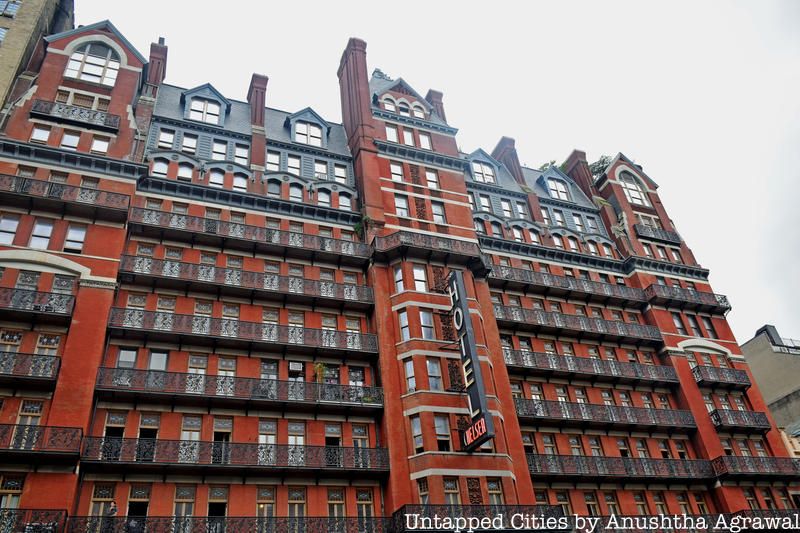
To say the least, the Chelsea Hotel is not your average New York City hotel. One notable guest, sci-fi author Arthur C. Miller recalled in his memoir that you could get high from solely the marijuana fumes lingering in the elevator of the hotel. For over 100 years, this counter-cultural landmark has served some of the world’s greatest poets, musicians, and artists of all time. Although sold for $80 million in 2011, the hotel remains home to several eccentric New Yorkers, including nightlife darling and event promoter Susanne Bartsch. The hotel is currently undergoing a massive renovation, but it is anticipated that it will reopen its doors to hotel guests in 2017.
Without further ado, here are our favorite secrets of the infamous Chelsea Hotel:
In 1884, the Chelsea Hotel opened its doors as one of New York City’s first co-operative buildings. It was also one of the first apartments in New York City to have duplexes and a penthouse. Another grand hotel of the era, The Dakota, opened its doors just four years earlier in 1880. The Chelsea Hotel would serve as a co-op for 21 years until it was forced to file bankruptcy in 1905. However, as luck would have it, the conversion was a success, since it was conveniently close to New York City’s theater district at the time (which has since moved northwards to Times Square).
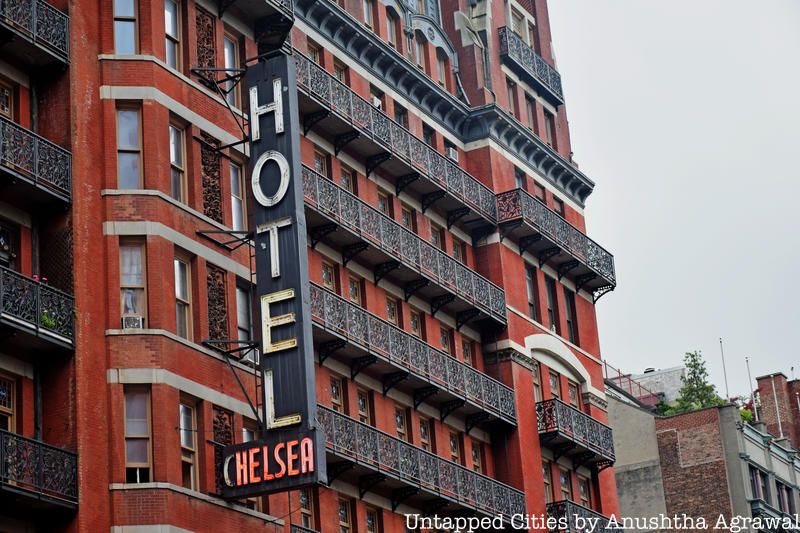
In 1966, the New York City Landmark Commission declared the Chelsea hotel a New York City landmark, calling it “one of the few remaining of the great Victorian Gothic apartment houses which once adorned the City.” The Commission goes as far to call it one of the “pioneer Victorian Gothic apartment houses.” The hotel was also inducted into the National Register of Historic Places in 1977. The 12-story hotel is particularly notable for its decorative iron balconies and a grand staircase that goes up to the 12th floor.
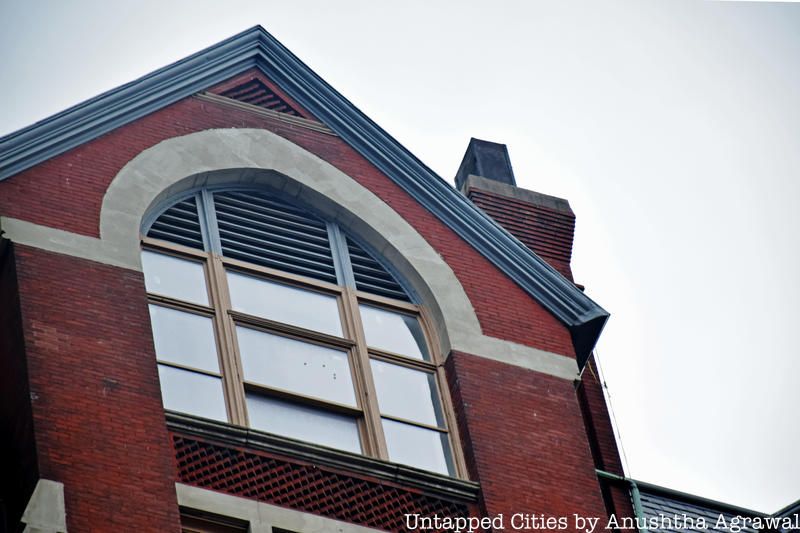
In 1996, David Bard, son of the noteworthy hotel manager Stanley Bard, filed for a 546 square foot edition to a studio on the top floor of the hotel. According to Curbed NY, this addition was approved by the Landmarks Preservation Commission was completed in 2001. Cottage-like additions to the tops of buildings are not uncommon in New York City – here are 10 other quirky ones.
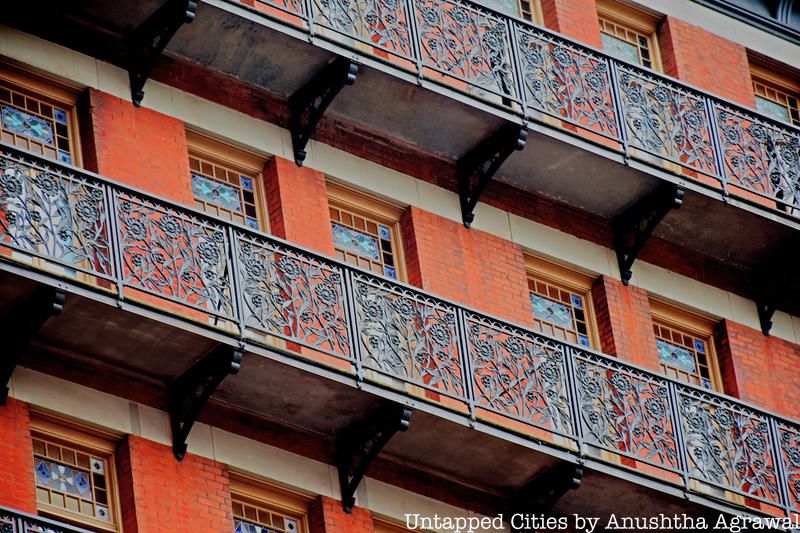
According to the Chelsea Hotel Blog, Chelsea Hotel builder Philip Hubert was an admirer of pro-socialist utopian philosopher Charles Fourier. Fourier believed that it was the job of society to adapt to human nature, rather than forcing humans to adapt to the industrial and commercial demands of society. For architecture, this meant housing large numbers of people in the format of a co-operative community (termed a phalanstery by Fourier) with an emphasis on shared dining experiences and public promenade spaces. The commune would be welcome to people of all backgrounds, a requirement necessary to engender the most fully functional society. The 100 rooms, the layout, and the number of occupants designed for the Chelsea Hotel is a direct application of Fourier’s ideas.
Philip Hubert also built the Lyceum theater, a community theater and the first of its kind in New York City.
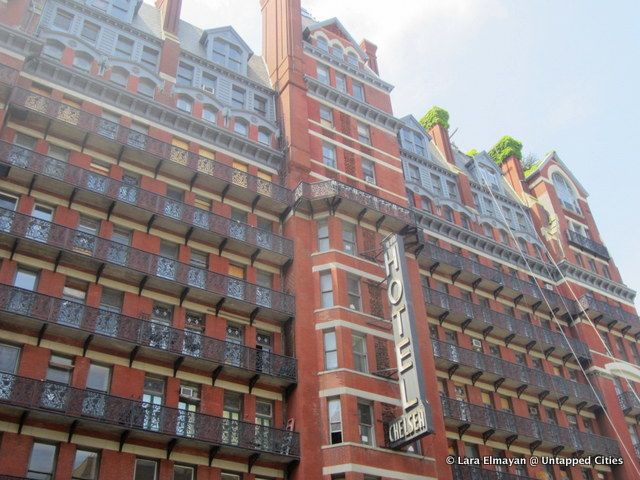
There are several sources that make the claim that the Chelsea Hotel was the tallest building in New York City when it was completed in 1884, including The New York Times which stated that it was the tallest until 1902 (though they issued a correction after saying it was among the tallest buildings in the city when completed). Vanity Fair later stated that it was the tallest building in New York City when it was completed. It’s definitely an odd claim, since according to the New York City Department of Buildings, the height of the Chelsea Hotel in 2011 was 138 feet, with a 2011 application to increase it to 144 feet. Furthermore, the New York World Building was completed in 1890 and was the tallest building in the world at 309 feet. By 1902, two more buildings would then surpass the height of the New York World Building.
Going back further, Trinity Church, built from 1846 to 1853, decades before the Chelsea Hotel, is 279 feet. Also in 1853, the Latting Observatory of the Crystal Palace was 315 feet, though it burned down in 1858.
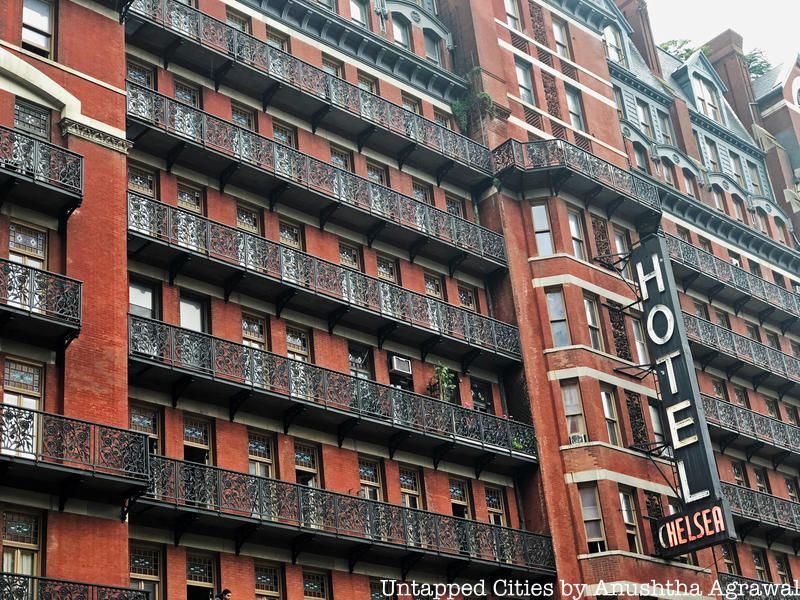
In an interview for the New York Times, sci-fi wrtier Arthur C. Clarke reveals that he wrote the screenplay for 2001: A Space Odyssey in his room at the Chelsea Hotel in the 1960s. Originally a short story called The Sentinel, Clarke teamed up with Stanley Kubrick to turn it into a movie. Clarke also wrote a novel on the story as well inside the Chelsea Hotel. Until his death in 2008, the Clarke spoke fondly of the Chelsea Hotel and would frequently stop in to visit.
One architectural feature that also attracted creatives and chaos to the Chelsea Hotel was its fireproof and soundproof walls. The Landmarks Commission writes in its designation report that the Chelsea Hotel “has some of the first fireproofed wrought-iron beams. They span the distance between walls, without intermediate columns.” This amenity was especially useful when rowdy guests would set fires in their room. One notable guest who accidentally set their room ablaze was Andy Warhol star Edie Sedgwick, who fell asleep while candles were still burning. After the incident, the Chelsea Hotel staff decided to move her into the room above the lobby to keep a close eye on her.
Among the several deaths that have occurred in Chelsea Hotel, one of the most famous was the murder of Nancy Spugen. Spugen is best known as the girlfriend of The Sex Pistols bassist Sid Vicious. The couple moved into Room 100 at the Chelsea Hotel in 1978, after The Sex Pistols broke up. The two were notorious for their rowdy behavior and drug usage. On October 12, 1978, Spugen was found dead on the bathroom floor of their hotel room. Sid was arrested for the murder of his girlfriend, but ended up dying of a heroin overdose while awaiting his date for the trial. It is said that the couple’s ghosts roam the hotel, among other deceased guests.
Take a look at some other notable ghosts said to reside in Manhattan.
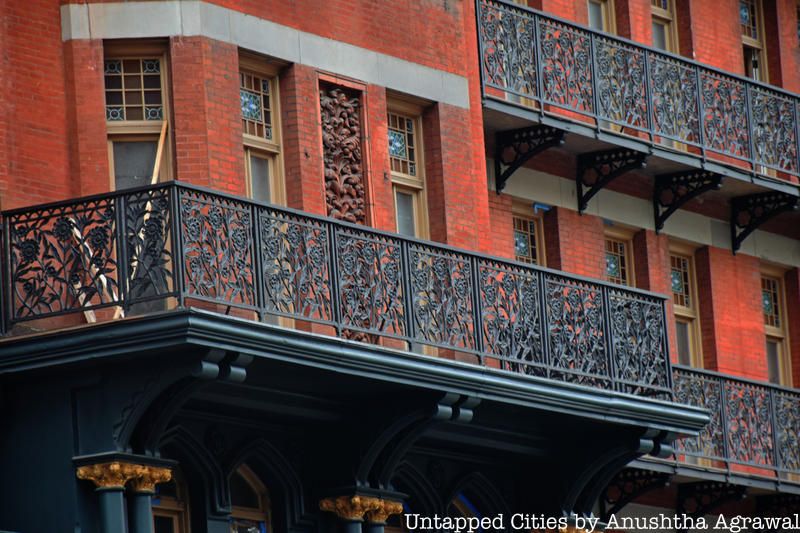
Bob Dylan, whose actual name is Bob Zimmerman, changed his last name to Dylan after the late Chelsea Hotel guest, poet Dylan Thomas. Like Spugen, Thomas also died in the Chelsea Hotel, said to be from alcohol poisoning but recent theories suggest it was from pneumonia. Like the residents of the Chelsea Hotel, Bob Dylan was also inspired by the space itself. Dylan references the Chelsea Hotel in several songs including Sara and wrote the album Blonde on Blonde at the hotel.
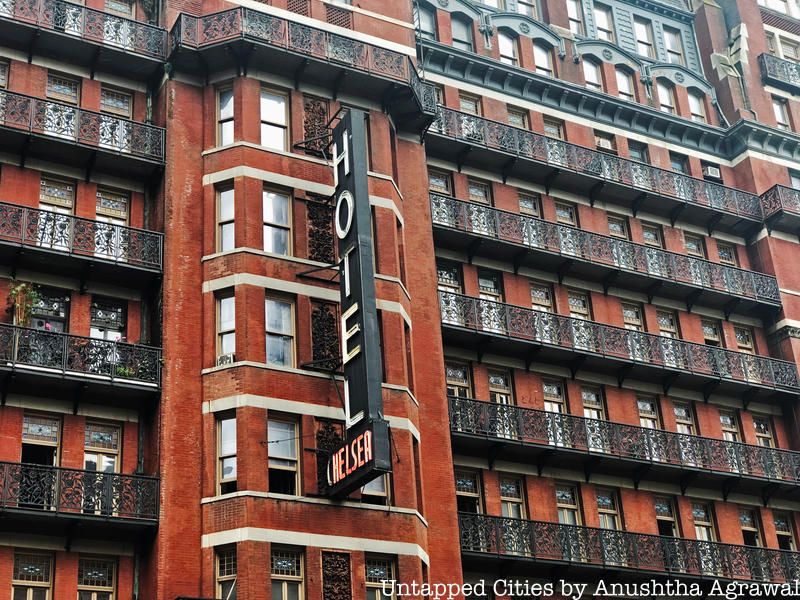
As recounted in Patti Smith‘s memoir, Just Kids, the musician heard that you could pay your rent in exchange for art. Smith recalls, “Everyone had something to offer and nobody seemed to have much money. Even the successful seemed to have just enough to live like extravagant bums. Although we can’t confirm that you could actually get into the hotel for free, we have a pretty good idea that the rent was next to nothing. As Arthur C. Clarke recalled, “there are no vacuum cleaners, no rules and shame.”
Next check out the Top 10 Secrets of the Dakota Apartments and Tracing the Patti Smith Trail in NYC from Tompkins Square Park to CBGB. Get in touch with the author @themaximalistny
Subscribe to our newsletter